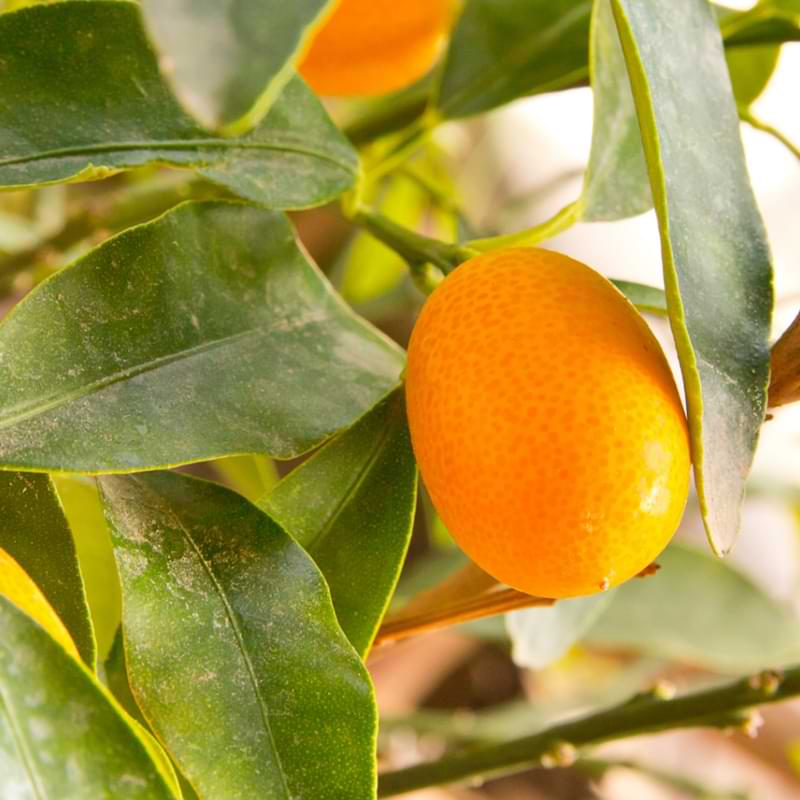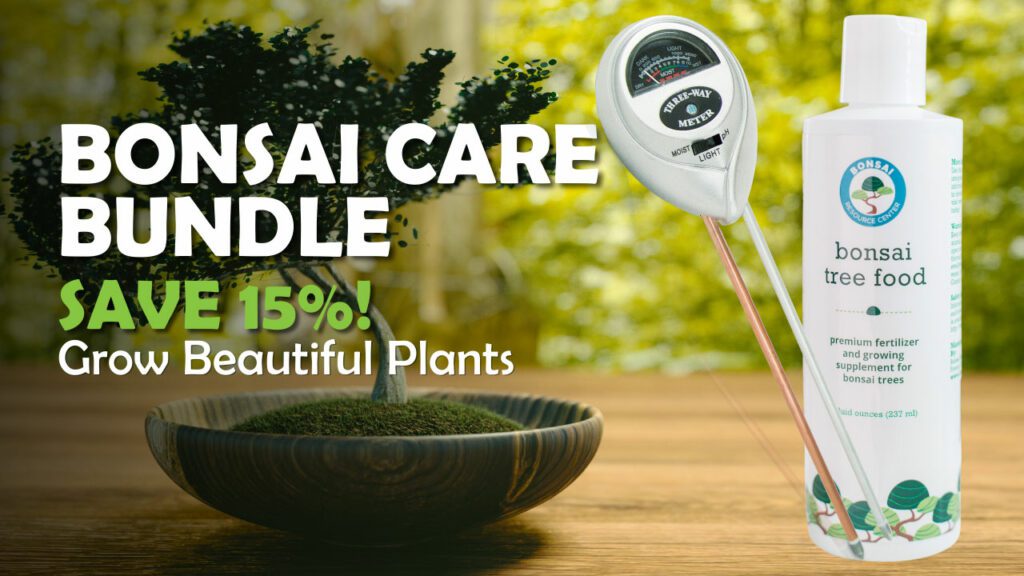Bonsai are usually prized for their beauty. However, a bonsai orange tree combines beauty and function. Calamondin orange trees are the orange tree most commonly selected for bonsai. They are miniature orange trees that produce evergreen leaves, fragrant flowers, and small, edible orange fruits.
These trees are both beautiful to look at and provide fruit that can be eaten (the calamondin oranges they produce are slightly sour). Orange trees have been grown indoors for centuries, so this makes a perfect bonsai for both beginners and those experienced with bonsai.
Bonsai orange trees do take some extra care and attention, but the result is well worth the effort.
Care Guide
Orange trees grow natively in tropical environments, so caring for an orange tree bonsai differs from the care of other types of bonsai. They are not considered particularly difficult for bonsai. Keep reading to find out how to take care of orange tree bonsai and to ensure that your bonsai thrives under your care.
Position
Orange trees are tropical trees, so they need warm temperatures and sunlight year-round. This means you should place your bonsai tree outside in a sunny spot during the summer. Don’t worry about protecting the orange tree from getting too much sun. Just make sure that you keep it well-watered during the heat of the summer.
Unlike most bonsai, you’ll want to bring your orange tree bonsai inside during the winter months. The heat inside the house won’t bother the tree, but the cold temperatures outdoors definitely will. Place the plant in a sunny window, preferably one facing south, but west or east will also work. If you are not able to place the bonsai in a window that gets enough sunlight during the winter, you’ll need to use artificial lights to keep your bonsai thriving during the winter.
Humidity and Temperature
As mentioned earlier, orange tree bonsai need warm temperatures. The tree should remain outside as long as temperatures are above 50 degrees Fahrenheit, but you should move the tree inside once the temperature begins to drop below that point.
While inside, keep the tree away from areas where the temperature fluctuates frequently. Don’t place it near heating vents or drafty windows. You want the temperature to remain as consistent as possible.
Bonsai orange trees need humidity, preferably 50 to 70 percent, which is unrealistic to achieve inside a house. However, you can raise the humidity level to make it closer to 50 percent.
During the winter, you’ll probably need to use humidity trays to keep the air near the bonsai humid enough. Other options are to group multiple plants together to create a microclimate with higher humidity or to get a humidifier to use while you have the bonsai inside over winter.
Soil
When choosing soil for your orange tree bonsai, look for a lightweight mix designed for indoor plants. Make sure the soil has good drainage and the mix is not designed to retain water.
Citrus trees like soil that is slightly acidic, but this is not absolutely necessary for growing an orange tree bonsai.
Orange trees do not like to sit in excess water, so you want a mix that allows extra water to drain quickly.
How Often Do You Water Bonsai Orange Trees?
Watering a bonsai orange tree requires balance. You want to water frequently enough that the soil does not get too dry, but not so often that water sits in the pot consistently. The exact timing of the watering will depend on several factors including temperature, season, size of the container, and the size of the bonsai.
Water when the top of the soil feels dry, but do not wait until all of the soil has dried out completely. When you water, water from the top to allow excess water to drain out the bottom. It is important that the orange tree container has holes in the bottom that allow for drainage.
During the summer, you will need to water your orange tree bonsai frequently. Depending on the climate in your area, you may need to water daily. During the winter, you will probably only need to water once a week, but, again, this depends on many different factors.
When watering, try to use room-temperature water. Water that is too cold can shock the orange tree’s roots. Some growers insist that using rainwater is best for orange trees even when they are inside during the winter.
While it’s not necessary to use rainwater and plenty of growers have success just using tap water, you may want to use rainwater if your tap water contains a lot of dissolved minerals.
When to Fertilize Orange Tree Bonsai
Orange tree bonsai need to be fertilized in order to thrive. Because they are in tiny pots rather than in the ground, they do not have access to the same amount of nutrients they otherwise would.
When selecting a fertilizer, look for one designed for citrus trees. Because bonsai are so small, you’ll need to heavily dilute the fertilizer before using it on your orange tree bonsai. Plan to apply the fertilizer once a month during the growing season.
If you cannot find a citrus fertilizer or you don’t want to keep multiple types of fertilizer on hand, you can use a general-purpose fertilizer. Again, be sure to dilute the fertilizer more than the instructions call for. I’d suggest using less than half of the amount called for.
When to Repot Bonsai Orange Trees
Bonsai orange trees grow quickly when they get the correct care. This means that you will need to repot often. Repot a bonsai whenever the root system fills up the container the plant is placed in. Expect to repot every 2-5 years depending on the age of your plant.
The best time to repot an orange tree bonsai is during the summer months, when the tree is the healthiest, so it will recover more quickly.
When repotting, trim away excess roots. Keep the main roots intact, but remove up to one-third of the rest of the roots. Depending on the size of your plant, you will either repot the plant in the same pot or place it in a bigger pot. Be sure to replace all of the soil at this time as well.
Provide plenty of water after repotting your orange tree bonsai.
How to Bonsai Orange Trees
Although it’s possible to grow calamondin orange trees from seed, it takes some time. It’s much easier to start with a healthy sapling or with a tree that is already in bonsai form.
Styling
If starting with a sapling, you can choose the bonsai shape of your orange tree. Styles that look good with orange trees’ natural shape are formal and informal upright styles. Orange trees can also be styled into slanting, cascade, or semi-cascade styles.
Before you begin shaping the tree, it’s important to know how you ideally want the tree styled. This will impact how you prune and shape the orange tree.
Orange trees are not considered difficult to style. That being said, you can also choose to buy an orange tree already in bonsai form if you are not comfortable styling bonsai.
You can wrap the trunk of the orange tree loosely with wire to shape the tree. The tree should have some flexibility, but if you want to dramatically alter the shape, you’ll probably have to do so in stages.
When the wire begins to become tight around the tree, loosen the wire before the orange tree is damaged. Once the tree has grown to the desired shape, you should remove the wire.
Pruning and Trimming
Prune your orange tree bonsai during the growing season. Try to avoid removing buds from the tree because the buds should develop into fruit later in the season.
If the orange tree is getting the sunlight, water, and nutrients that it needs, it can grow very quickly. Be sure to prune as needed.
You’ll also find yourself needing to trim the roots each time you repot the bonsai. You should also trim the roots before shaping the bonsai if starting with an orange tree sapling. To do this, trim away about one-third of the roots before placing the orange tree bonsai in its first container.
Orange Tree Bonsai FAQ
For many, the idea of growing fruit trees inside, much less bonsai fruit trees, seems much more difficult than it actually is. Here are some additional questions related to orange tree bonsai that you may have.
Can you grow a bonsai orange tree from seed?
Yes, you can grow a bonsai orange tree from seed. Although you can get most orange seeds to sprout, calamondin is the best choice for bonsai because it produces small fruit. Other types of oranges would be disproportionately large for bonsai.
How long does it take to grow a bonsai orange tree?
If starting your calamondin orange tree from seeds, expect to wait 2-3 years for the seeds to develop into a fruiting plant.
Can you bonsai a citrus tree?
You can bonsai citrus trees including oranges and lemons. Although you can technically bonsai almost any tree, you’ll have the best luck if you choose varieties of citrus trees that already produce small fruit. Miniature varieties are also easiest to keep small when grown as bonsai.
When should I repot my orange bonsai tree?
When possible, try to repot your orange tree during the summer. The tree is more likely to recover quickly when growth is occurring. You can also repot during the spring right before growth begins if needed. Avoid repotting during the fall and winter.

Do bonsai fruit trees produce fruit?
Bonsai fruit trees are able to produce fruit. In the case of orange trees, you’ll need to make sure the flowers get pollinated in order to produce fruit. If flowering occurs during the winter when the trees are inside away from pollinators, you’ll need to help transfer the pollen from flower to flower if you want fruit later.
Why are the leaves falling off my bonsai orange tree?
When grown outside of their native tropical environment, orange trees generally lose a few leaves during the winter, especially in January and February, due to cold temperatures and fewer daylight hours. Don’t worry if your tree loses a couple of leaves during this time.
That being said, losing a larger number of leaves is a problem. Losing leaves while indoors can be a sign of overwatering or lack of light. Check the roots to see if overwatering is causing root rot; if so, begin watering less often. If the problem is lack of light, use artificial lights to supplement the amount of light that the plant receives during winter months.
Can a bonsai orange tree survive indoors?
Unlike most bonsai, orange trees should be brought indoors during the winter. They are tropical plants that need high, stable temperatures throughout winter. Do not leave orange trees outside when the weather drops below 50 degrees Fahrenheit.
Have another question about caring for your orange tree bonsai plant? Join the conversation in our Facebook group.
Bonsai With Us!
The Bonsai Resource Center is here to help you learn about hinoki cypress bonsai and provide you with the tools you need to keep your plant healthy and strong. Explore our other articles, visit our online shop, and connect with other bonsai lovers in our Facebook group to learn everything you need to know about this rewarding hobby.



